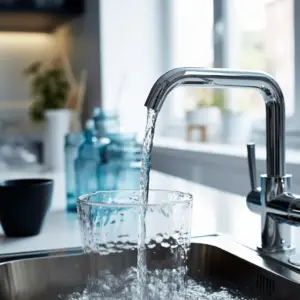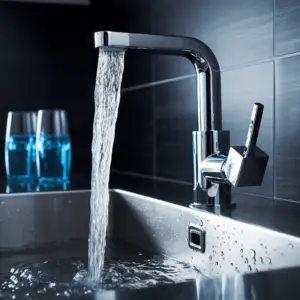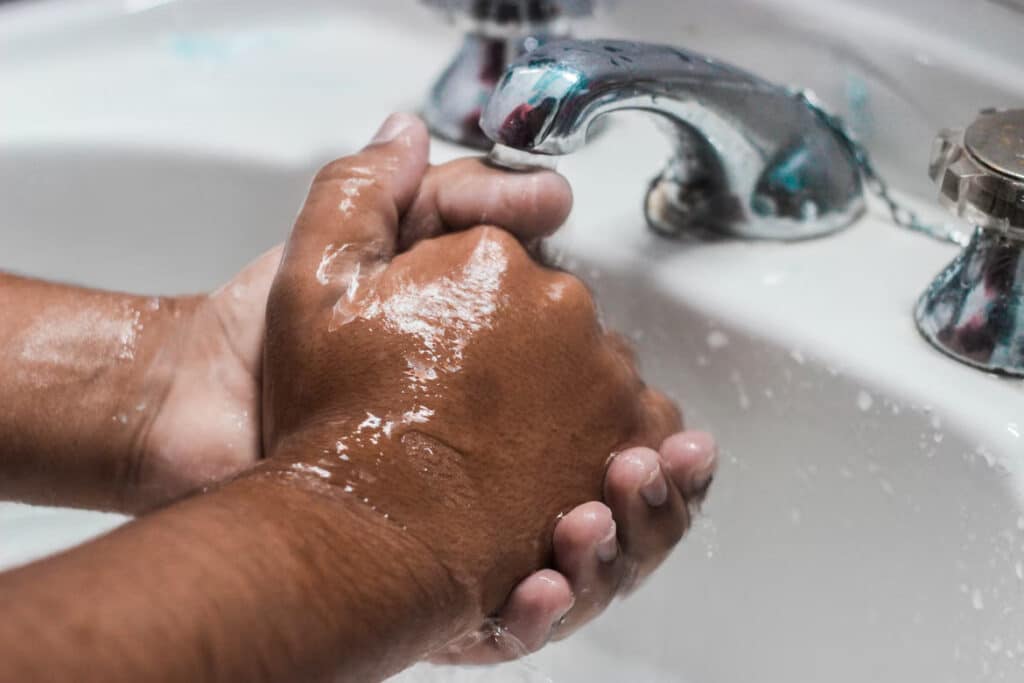Most often, water comes out of the faucet with a cloudy appearance caused by harmless tiny air bubbles in the water. But cloudy water from only one tap results from the damaged aerator, the air in the pipe, or the water heater filter is dirty. To troubleshoot these issues, do a replacement of the aerator and filters.
Table of Contents
Cloudy Water From Only One Faucet: Why?

When getting water from the tap, you usually expect clean water for use or drinking. However, cloudy water from only one faucet is questionable, leaving you wondering what would be the cause.
In this write-down, we shall look at possible root causes of cloudy water from one faucet and how you can fix the problem.
Aerator
A faucet aerator serves many purposes, with the primary being to assist in minimizing the splashing of water when it flows into the sink. Some of its other functions include:
- Aid in reducing or preventing water from clouding up due to air bubbles as it breaks down the stream of water into smaller droplets creating more surface area to dissipate the air bubbles.
- It also offers uniform water flow shape out of a faucet while minimizing water wastage.
- It lessens the faucet noise providing a softer feel to the faucet water.
- In houses with low pressure, it slightly aids increase the water pressure throughout the house.
- Finally, it is a minor filter for small grains such as sand, rust, and other tiny particles.
A clogged Aerator
Therefore, if the faucet’s aerator has a partial clog due to mineral deposits like calcium, it may result in the cloudiness of the faucet water.
However, you can fix this by taking it out and cleaning the filter. For instance, dip the aerator in a vinegar solution for 2 hours and then, using a toothbrush, brush it off. If the problem becomes persistent, it is a sign that it is damaged and requires a replacement.
Damaged Aerator
If the aerator is old or damaged, it is the one causing the cloudiness; this is time to change it.
To fix the aerator, turn off the water valve. Ensure there is spurting out of the water while unscrewing and examining the aerator.
Unscrew the Faucet Spout
Spin the front of the spout with a wrench. Clasp onto the tap and start spinning it to loosen it, so it comes off. You will notice the aerator on the inside.
Replace the Aerator
Remove the old or the damaged aerator and replace it with a new one to clear the cloudiness and for long-term benefits.
Air Bubbles
When water from your water pipes is cold or there is increased pressure in the supply pipes, it absorbs a lot of air as it makes its way to your home. As the temperatures decline or the pressure increases, the air becomes more soluble in water. It is the main reason behind cloudy water.
Air bubbles form when cold water heats in your pipes and dissolved air escapes.
Therefore, when water comes out of the faucet into the glass, the pressure decreases and begins to clear.
An easy way to troubleshoot whether this is causing your water to be cloudy is to get a glass of water from the tap and see if it will clear up after a few minutes from the bottom going up as air naturally rises to the top to escape.
If the reason for the cloudiness is because of pressure or temperature fluctuation, then the water is safe for drinking. It should not be a concern as it is just air in the water.
Solution
Run the faucet water till it is cold– Try flushing the tap to let the warm come out as there will be no bubbles when cold water starts to flow out. You can use flushed water to clean or water your plants.
Another alternative is to insulate your pipes to keep the water at a consistent temperature. You can tape your water pipes with pipe sleeves or fiberglass insulation from your local hardware. Although not all water pipes need to be insulated, even the one directing the water into your sink is enough.
Additionally, you can call a plumber to install an air elimination device.
Other Factors For Faucet Cloudy Water
Other times it may not be only one faucet streaming cloudy water. In such a case, what would be the cause in addition to the one discussed above? Let’s examine some of them and how you can solve them.
Hard water
The mineral content in water can be another reason for water looking cloudy, occasionally referred to as “hard water.” You can establish this cause if your glasses have white spots after running the dishwasher; soap does not make lather easily when agitated in water.
A mineral usually deposits on plumbing fixtures when water is hard. These are calcium and magnesium, which are soluble in water. You can also use DIY testing kits to measure the hardness of the water. It is very hard if it is more significant than 7.0 grains per gallon.
Mostly, hard water is harmless to drink and clears with time. However, plumbing fixtures and appliances that use hard water may experience issues such as your coffee maker’s coat or clog with mineral deposits.
Solution
Install a water softener under your sink. This device is installed on your water main to remove mineral content from your hard water, leaving it softer.
However, note that there is a difference between water filters and water softeners as filters don’t make water soft, nor do softeners remove germs or contaminants.
Install some whole house water softening unit– Hard water affects not only the faucet water but also showers, dishwasher, and washing machines. So, installing a complete-house softening unit would be a great option.
Total Suspended Solids

High levels of Total Suspended Solid (TSS) are solid materials suspended in water but not dissolved. Thus, they settle on the bottom of the glass if it sits long enough. These particles are clay, silt, algae, and iron or manganese.
The safety of such water depends on the solid. Some cause health issues like bacteria growth, and some cause damage to plumbing fixtures. Therefore, have your water tested on the spot if you highly suspect that TSS is the reason behind your cloudy water.
Solution
The best option to curb this problem is to install a whole house filtration system. Nevertheless, several types of water purification systems are better for various situations.
Consult your plumber, and find your home’s perfect water purification system.
Faucet water cloudiness is a frequent occurrence for most residents. But should it be taken for granted? No, if water from one of your faucets is cloudy, the primary reason is an aerator that is damaged, the heater filters are dirty, or excess air is in the pipes.
To sum it up, water cloudiness is nothing much to worry about, although you should never disregard it. Ensure you establish the root cause of the problem and fix it immediately using the comprehensive guidelines discussed above.


